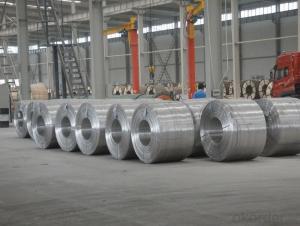Aluminum Plate 4x8
Aluminum Plate 4x8 Related Searches
Led Light Bulbs For Ceiling Fixtures Led Lamps For Ceiling 42 In Ceiling Fan With Light Aluminum Coil Stock For Gutters Aluminum Foil For The Grill Hole Saw For Aluminum Plate Aluminum Tread Plate For Trailer Bow Plate For Aluminum Boat Aluminum Foil For Grow Room Aluminum Foil For Joint PainHot Searches
Stock Price For Aluminum Aluminum Coil Stock For Sale Aluminum Gutter Coil For Sale Used Aluminum Scaffolding For Sale 1/4 Aluminum Plate For Sale Aluminum Bar Stock For Sale Aluminum Round Stock For Sale Aluminum Diamond Plate For Sale Aluminum Scaffolding For Sale Craigslist 6061 Aluminum Plate For Sale Aluminum Dock Plate For Sale 7075 Aluminum Plate For Sale Aluminum Tread Plate For Sale Aluminum Checker Plate For Sale Aluminum Plate For Sale Near Me Plate Aluminum For Sale Aluminum Plate For Sale Aluminum Square Stock For Sale Aluminum Flat Stock For Sale Billet Aluminum Stock For SaleAluminum Plate 4x8 Supplier & Manufacturer from China
Okorder.com is a professional Aluminum Plate 4x8 supplier & manufacturer, offers integrated one-stop services including real-time quoting and online cargo tracking. We are funded by CNBM Group, a Fortune 500 enterprise and the largest Aluminum Plate 4x8 firm in China.Hot Products
FAQ
- When choosing a stainless steel sheet alloy, it is crucial to take into account the particular needs of your application, as each alloy possesses its own set of advantages and disadvantages. There exists a variety of stainless steel sheet alloys from which to choose, each offering distinct properties and characteristics. Some of the most frequently encountered stainless steel sheet alloys are as follows: 1. Austenitic Stainless Steel: This is the most commonly used and versatile type of stainless steel. It lacks magnetic properties and contains substantial amounts of chromium and nickel, resulting in exceptional corrosion resistance and good formability. The 304 and 316 grades are examples of austenitic stainless steel alloys. 2. Ferritic Stainless Steel: Ferritic stainless steel possesses magnetic qualities and contains high chromium levels. It exhibits good corrosion resistance and is generally less expensive than austenitic stainless steel. The 430 and 446 grades are common examples of ferritic stainless steel alloys. 3. Martensitic Stainless Steel: Martensitic stainless steel is magnetic and contains significant amounts of carbon and chromium. It is renowned for its hardness and strength, rendering it suitable for applications requiring high wear resistance. The 410 and 420 grades are examples of martensitic stainless steel alloys. 4. Duplex Stainless Steel: Duplex stainless steel is a combination of austenitic and ferritic stainless steels, offering a balanced blend of their properties. It possesses increased strength and corrosion resistance when compared to austenitic stainless steel. Common duplex stainless steel alloys include the 2205 and 2507 grades. 5. Precipitation Hardening Stainless Steel: Precipitation hardening stainless steel alloys can be heat treated to attain high levels of strength. They contain elements such as copper, aluminum, or titanium, which form precipitates during heat treatment, leading to enhanced strength. The 17-4PH and 15-5PH grades are examples of precipitation hardening stainless steel alloys. Therefore, it is essential to carefully consider the specific requirements of your application when selecting a stainless steel sheet alloy, as each alloy possesses its own unique strengths and limitations.
- Yes, stainless steel sheets can be cut to custom sizes. Stainless steel is a versatile material that can be easily cut and fabricated into various shapes and sizes to meet specific requirements. There are several methods for cutting stainless steel sheets, including shearing, laser cutting, water jet cutting, and plasma cutting. These techniques allow for precise and accurate cuts, ensuring that the stainless steel sheets can be tailored to the desired dimensions. Whether it is for industrial, commercial, or residential applications, stainless steel sheets can be easily customized to fit specific needs.
- To achieve the bending or forming of stainless steel sheets, the following steps can be followed: 1. The first step is to select the appropriate stainless steel grade. Stainless steel is available in various grades, each with its own unique properties. It is important to choose the grade that best fits the requirements of your project, considering factors such as corrosion resistance, strength, and formability. 2. The next step involves using the correct tools. Specific tools like a hydraulic press brake or a metal bending machine are necessary for bending stainless steel sheets. These tools apply force evenly, ensuring precise and consistent bends. It is crucial to use tools that are designed for stainless steel in order to avoid damaging the material. 3. Before bending, it is essential to prepare the stainless steel sheet. This includes ensuring that the sheet is clean and free from any dirt or debris. Additionally, marking the desired bending lines on the sheet using a pencil or tape can serve as a guide throughout the process. 4. The bending angle and radius need to be determined based on the specific requirements of the project. This can be done by using a protractor or a template to accurately measure and mark the desired angles. 5. To prevent any movement or slipping during the bending process, it is important to securely clamp the stainless steel sheet to the bending tool or machine. This will ensure stability and accuracy throughout the bending process. 6. The next step involves applying pressure gradually. It is recommended to start the bending process slowly and gradually increase the pressure. This helps prevent the stainless steel sheet from cracking or warping. Close attention should be paid to the bending process to ensure that the desired shape is achieved without any defects or deformation. 7. If there is a need to create multiple bends or complex shapes, the process can be repeated as necessary. Each bend should be carefully measured and aligned with the previous bends to achieve a consistent and accurate result. 8. After bending the stainless steel sheet, any residual marks or burrs can be removed using a file or sandpaper. This will give the finished product a smooth and polished appearance. It is important to keep in mind that bending stainless steel sheets can be challenging, particularly for thicker gauges or harder grades. It is advisable to practice on scrap pieces or seek professional assistance if you are uncertain or lack experience in working with stainless steel.
- Yes, stainless steel sheets can be cut to size. Stainless steel sheets are versatile materials that can be easily customized to fit specific dimensions and requirements. They can be cut using various methods such as plasma cutting, laser cutting, or waterjet cutting. These processes allow for precise and accurate cuts, ensuring that the stainless steel sheet is cut to the desired size without compromising its integrity. Additionally, stainless steel is known for its durability and resistance to corrosion, making it an excellent choice for applications that require cutting and shaping.
- Yes, stainless steel sheets can be used for magnetic shielding. Stainless steel has a high permeability, which means it can redirect and absorb magnetic fields, making it an effective material for shielding against magnetic interference.
- To prevent galling on stainless steel sheets, you can apply a lubricant or anti-seize compound on the surface before any friction occurs. This will help reduce friction and prevent the sheets from sticking or seizing together. Additionally, using proper machining techniques and avoiding excessive pressure or heat can also help prevent galling.
- To prevent warping on stainless steel sheets, there are several steps you can take: 1. Proper storage: Store stainless steel sheets in a dry, flat, and well-ventilated area. Avoid storing them in humid or damp conditions as moisture can cause the sheets to warp. 2. Handling with care: When moving or handling stainless steel sheets, use proper lifting techniques to minimize stress on the material. Avoid dropping or mishandling the sheets, as this can lead to warping. 3. Proper cutting and shaping: When cutting or shaping stainless steel sheets, use appropriate tools and techniques to ensure clean and precise cuts. Avoid using excessive force or incorrect cutting methods, as this can cause the sheets to warp. 4. Controlled heat application: During welding or other heat-related processes, it is crucial to control the heat application. Excessive heat or uneven heating can lead to warping. Use proper techniques, such as preheating the material or using heat sinks, to distribute heat evenly and minimize the risk of warping. 5. Avoid overloading: Do not overload stainless steel sheets with excessive weight or pressure. Ensure that the load is evenly distributed to prevent deformation and warping. 6. Cooling process: After any heat-related processes, allow the stainless steel sheets to cool down slowly and naturally. Avoid rapid cooling methods, such as quenching with water, as this can cause uneven contraction and result in warping. 7. Quality control: Ensure that the stainless steel sheets you purchase are of high quality and meet the required standards. Inferior quality materials may have inherent defects that can lead to warping. By following these preventive measures, you can minimize the risk of warping on stainless steel sheets and maintain their integrity and quality.
- One way to prevent galvanic corrosion on stainless steel sheets is to ensure that they are not in direct contact with dissimilar metals. This can be achieved by using insulating materials, such as rubber gaskets or plastic washers, between the stainless steel sheets and any other metal surfaces they come into contact with. Additionally, regular cleaning and maintenance of the stainless steel sheets can help remove any potential corrosive agents and minimize the risk of galvanic corrosion.














































